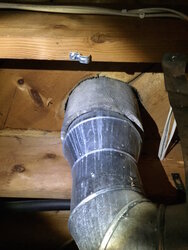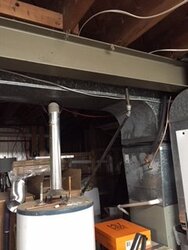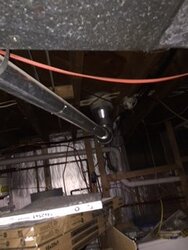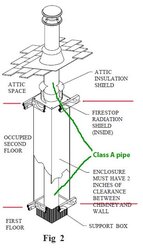Hello, complete newbie, but have been reading a lot.
I want to install a wood burning stove in the basement of my 1200 sq ft ranch home. I have an existing asbestos concrete chimney near where I plan to install the stove (right next to the furnace). The previous owner used it to vent the water heater, but I went with an electric heater.
The asbestos concrete is in good condition, no deterioration, and is 8" wide and at least 17' long. Can I use this to vent my stove, or should I still install a liner? I'm betting that you'll advise me to use a liner as there may be cracks now, or eventually?
Also, I wasn't planning on adding a blower, but I may be wrong. The stove will be near the middle of the basement, and will lie under the main supply branch of my Hvac system, and a few feet from a cold air return that immediately feeds into the furnace. The basement will have a few rooms, which I will feed with new ducting I will install. The stove goes in the larger part of the basement that is near an open staircase to the living room/kitchen. I don't intend for the stove to warm the entire home, but hoped to supplement the furnace.
The house is well insulated and early evidence suggests it will be harder to cool than to heat due to window size and placement.
Any recommendations would be appreciated.
I want to install a wood burning stove in the basement of my 1200 sq ft ranch home. I have an existing asbestos concrete chimney near where I plan to install the stove (right next to the furnace). The previous owner used it to vent the water heater, but I went with an electric heater.
The asbestos concrete is in good condition, no deterioration, and is 8" wide and at least 17' long. Can I use this to vent my stove, or should I still install a liner? I'm betting that you'll advise me to use a liner as there may be cracks now, or eventually?
Also, I wasn't planning on adding a blower, but I may be wrong. The stove will be near the middle of the basement, and will lie under the main supply branch of my Hvac system, and a few feet from a cold air return that immediately feeds into the furnace. The basement will have a few rooms, which I will feed with new ducting I will install. The stove goes in the larger part of the basement that is near an open staircase to the living room/kitchen. I don't intend for the stove to warm the entire home, but hoped to supplement the furnace.
The house is well insulated and early evidence suggests it will be harder to cool than to heat due to window size and placement.
Any recommendations would be appreciated.





